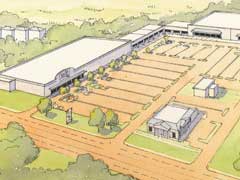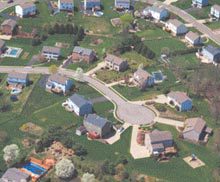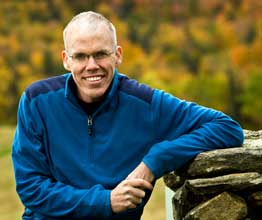The ability of a community to successfully react to challenges, through prepared response and with the benefit of strong systems that inform, communicate, and access resources, is often referred to as “resiliency.” Resilient communities don’t rely only on top-notch physical environment and civic structures, without also investing in their people. Resilient communities don’t rely on the sheer determination of their people alone, without also building places that will last while carefully charting their future. It is when, as Congress for the New Urbanism (CNU) co-founder Andres Duany describes it, both the “hardware” – the physical forms and organizations – and the “software” – the systems and the people – of community are purposefully cultivated, that a place’s resiliency becomes a powerful and securing strength for its people to rely on and benefit from.
Believing that communities can cultivate their own strength, over time and with collective buy-in, the CNU Charter preamble opens with the following statements:
The Congress for the New Urbanism views disinvestment in central cities, the spread of placeless sprawl, increasing separation by race and income, environmental deterioration, loss of agricultural lands and wilderness, and the erosion of society’s built heritage as one interrelated community-building challenge.
We stand for the restoration of existing urban centers and towns within coherent metropolitan regions, the reconfiguration of sprawling suburbs into communities of real neighborhoods and diverse districts, the conservation of natural environments, and the preservation of our built legacy.
Much of the Charter that follows calls for a reinvestment in connectivity: physical connections, institutional connections, transportation connections, and even (especially) the opportunity for inter-personal or social connections. Through those connections, the web of community is created and then reinforced.
Concentrations of civic, institutional, and commercial activity provide central gathering places and offer a focus to the surrounding neighborhood. Safe transportation alternatives provide mobility to all members of a community, to all of its varied resources. Broad range of housing types and price levels provide for diversity of age, race, and income and strengthen the personal and civic bonds of a community. Without question, the physical environment and individual elements that constitute a city or town play a central role in reinforcing the community and its people.
But resiliency takes the idea of “community” further, to not just the streets, blocks, homes, stores and churches of a place, but to how those elements work together. Resiliency addresses the extent to which those elements (and the people they are made up of) are working towards similar goals.
Here in Beaufort County we benefit from historical centers – downtown Beaufort, old town Bluffton, Paris Avenue through Port Royal – that provide excellent examples of authentic place, the sort of “hardware” that serves a community for dozens of generations. We are seeing the hard work being done by both the county government as well as those of our cities and towns, to provide framework for improving our physical environment through strategic planning and form-based codes. We benefit from civic institutions and non-profit organizations too numerous to mention, all striving to make our community better in many different ways. And we enjoy all of this in one of the most spectacular natural environments in the world.
Yet, if we are going to be a resilient community, one that can endure setbacks and can withstand the challenges we hear about so often, we will need a fertile environment in which our connections will grow and thrive. We will need the systems in place that offer individuals, and our community as a whole, choices in how to respond to the challenges and the opportunities that we face. Together we must address our vulnerabilities, comprehensively planning our response not only to current problems, but those we aren’t even aware of yet. If we do, we will be building our own resiliency, preparing our community last another three centuries and more.
This article was written for Lowcountry Weekly by the Congress for the New Urbanism – Carolinas Chapter. For more information visit www.cnu.org








